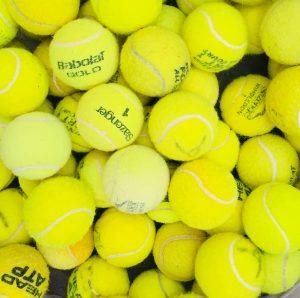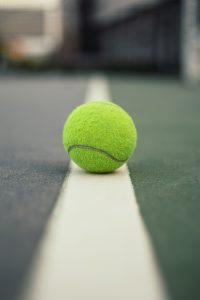We may earn money or products from the companies mentioned in this post.
Introduction

Tennis shoes have come a long way since their inception, evolving from regular sports shoes to specialized footwear designed specifically for the demands of the game Over time, tennis shoes have become an essential part of any player’s gear, offering not only comfort and support but also crucial performance benefits on the court In this article, we will explore the history of tennis shoes and delve into why wearing proper footwear is vital in sports, particularly in tennis
A Brief History of Tennis Shoes
The origins of tennis shoes can be traced back to the late 19th century when players began using rubber-soled canvas sneakers during matches These early models were lightweight and flexible, providing better traction on grass courts compared to traditional leather-soled shoes
As tennis gained popularity as a sport, shoe manufacturers recognized the need for specialized footwear that could withstand the rigorous movements and lateral transitions required on different court surfaces This led to advancements in shoe technology, with features such as reinforced toe caps, cushioning systems, and improved grip being incorporated into tennis shoe designs
The Importance of Wearing Proper Footwear in Sports
Wearing proper footwear is crucial in sports for several reasons, especially in a high-impact game like tennis The right pair of tennis shoes can significantly impact a player’s performance and help prevent injuries
1 Performance Enhancement:
Tennis requires quick sprints, sudden stops, lateral movements, and rapid changes in direction The design elements found in specialized tennis shoes cater specifically to these demands Features like stability technologies provide enhanced support during lateral movements while cushioning systems absorb shock from impacts on hard court surfaces These factors contribute to improved agility, speed, and overall performance on the court
2 Injury Prevention:
Injuries are a common occurrence in tennis, mainly due to the repetitive stress placed on the feet, ankles, and knees Wearing proper tennis shoes can help mitigate these risks by providing stability, support, and protection to vulnerable areas of the foot The cushioning systems in tennis shoes also help absorb impact forces and reduce strain on joints, reducing the likelihood of overuse injuries such as plantar fasciitis or shin splints
In conclusion, tennis shoes have evolved from simple canvas sneakers to highly specialized footwear designed to enhance performance and prevent injuries on the court Understanding the history of tennis shoe development and recognizing their importance in sports underscores the value of investing in quality footwear that caters to the unique demands of each game
Unique Features of Tennis Shoes

Tennis shoes are designed with several unique features that make them essential for playing the sport These features not only enhance performance but also ensure maximum comfort and protection for players Let’s explore some of these distinctive characteristics that set tennis shoes apart from other athletic footwear
Superior Traction and Grip
One of the key attributes of tennis shoes is their superior traction and grip on the court surface In tennis, players need to make quick lateral movements to chase down balls and change direction rapidly The shoe design plays a crucial role in providing the necessary grip to prevent slipping and sliding during these dynamic movements
Importance of Lateral Movement in Tennis
Lateral movement is an integral part of playing tennis Players constantly shift their weight from side to side as they move across the court, making sharp cuts and changes in direction Tennis shoes are specifically engineered to support these quick directional changes, enabling players to maintain stability while executing powerful shots or swift footwork
Enhanced Lateral Support and Stability
To minimize the risk of ankle injuries, tennis shoes offer enhanced lateral support and stability The construction of these shoes includes reinforced sides that provide additional protection during sudden movements or when landing from jumps This extra support helps reduce the chances of rolling or twisting an ankle, allowing players to play with confidence and without fear of injury
Cushioning and Shock Absorption Properties
Tennis involves repetitive high-impact movements such as jumping, running, and stopping abruptly, which can put significant strain on a player’s joints and muscles The cushioning properties of tennis shoes help absorb shock and reduce stress on key areas like knees, ankles, and lower back
Different Types of Cushioning Materials
Tennis shoes utilize various cushioning materials to provide optimal comfort and shock absorption Some popular cushioning technologies used in tennis shoes include PU foam, EVA foam, Gel cushioning, and Air cushioning These materials are strategically placed within the shoe’s construction to offer targeted support and alleviate pressure on vulnerable areas
Overall, tennis shoes stand out due to their superior traction and grip, enhanced lateral support and stability, as well as their cushioning and shock absorption properties These unique features make them an essential piece of equipment for any tennis player looking to perform at their best while minimizing the risk of injuries
Differences Between Tennis Shoes & Other Athletic Footwear

When it comes to athletic footwear, tennis shoes stand out from the crowd Let’s delve into the various aspects that set them apart from other types of athletic shoes
Comparison with Running Shoes
1 Variations in Sole Patterns for Different Types of Movements:
Tennis shoes are designed with unique sole patterns to cater to the specific movements involved in playing tennis These patterns provide excellent traction on both hard and clay courts, allowing players to swiftly change directions without losing balance or grip
2 Stability vs Flexibility:
Unlike running shoes that prioritize flexibility for smooth heel-to-toe transitions, tennis shoes strike a balance between stability and flexibility Tennis players require lateral stability during quick side-to-side movements, while still needing enough flexibility to move freely around the court
Comparison with Basketball Shoes
1 Difference in Ankle Support Levels:
Ankle support is a crucial consideration when comparing tennis and basketball shoes Basketball involves frequent jumping and landing, necessitating high ankle support to prevent injuries like sprains or twists On the other hand, tennis players rely more on lateral movements and therefore don’t require as much ankle support as basketball players do
2 Weight Difference between the Two Types:
Tennis shoes tend to be lighter compared to basketball shoes due to different playing requirements Lighter footwear enables agile movement across the court without hindering speed or responsiveness
These distinctions highlight why tennis shoes are specifically tailored for the demands of this fast-paced sport compared to other types of athletic footwear available on the market today
Selecting The Right Tennis Shoe For You

When it comes to playing tennis, having the right shoes can make all the difference in your performance on the court One important factor to consider is the playing surface you will be competing on Different surfaces, such as clay court, hard court, or grass court, require specific outsoles to optimize your game But how exactly does your choice of outsole affect your game performance? Let’s explore
Court Specific Outsoles: Clay Court, Hard Court or Grass Court
Each type of tennis court surface has its own unique characteristics that can impact your movement and stability during a match Clay courts tend to be more slippery, requiring a shoe with a specific clay court outsole that provides better traction On the other hand, hard courts are more abrasive and call for a durable outsole that can withstand frequent lateral movements Grass courts have their own challenges since they can be slippery when wet Shoes designed for grass courts usually have smaller nubs or spikes for improved grip
Finding The Appropriate Fit And Comfort Level
Aside from considering the playing surface, finding a tennis shoe that fits well and offers optimal comfort is crucial Before making a purchase, it’s important to try on multiple pairs and take them for a test run on the court if possible This allows you to assess factors such as cushioning, support, and overall fit Remember that different brands may have slightly different sizing standards, so don’t hesitate to try different sizes until you find the perfect fit
Sizing Considerations: Width, Length, and Arch Support
In addition to finding the right size in terms of length, paying attention to width and arch support is equally important Tennis players with wider feet might need shoes with broader toe boxes to prevent discomfort For those with high arches or flat feet, shoes with appropriate arch support can help maintain proper foot alignment and reduce the risk of injury
Additional Factors To Keep In Mind
When selecting tennis shoes, there are a few other factors worth considering:
-
Budget Constraints:
Balancing quality with affordability is important While it’s tempting to go for the most expensive pair on the market, consider your budget and look for options that offer good value for money -
Brand Preferences and Loyalty:
Some players have brand preferences based on past positive experiences or loyalty to a particular brand If you’ve had success with a certain brand in the past, it may be worth sticking with them -
Personal Style and Aesthetic Preferences:
Lastly, don’t forget about personal style! Tennis shoes come in various designs and colors, so choose a pair that resonates with your taste and makes you feel confident on the court
By taking into account the playing surface, finding the right fit and comfort level, as well as considering additional factors like budget constraints, brand preferences, and personal style, you can select tennis shoes that enhance your performance while keeping you comfortable and stylish during every match
Useful Links

What are the key features of tennis shoes?
Is it important to wear court shoes while playing tennis?
How to Choose the Right Tennis Shoe
Clay Court Shows Vs Hard Court Shoes – Tennis Express
How to Choose the Right Tennis Shoe
Court Shoes for Tennis and Pickleball | – Game-Set-Match
Guide to Tennis Shoes – What to Wear on Grass, Clay and …
Everything you need to know about clay-court tennis shoes
11 Best Shoes For Tennis Players: Men’s & Women’s (2023)
Kicks on Court
Proper Tennis Shoes Matter on the Court
Sneakers – Wikipedia
What are Tennis Shoes – Everything You Need to Know
The Best Tennis Shoes for Women of 2023 – Travel + Leisure
TENNIS SHOES | Hydrogen
Are you using the right tennis shoes for the surface you’re …






